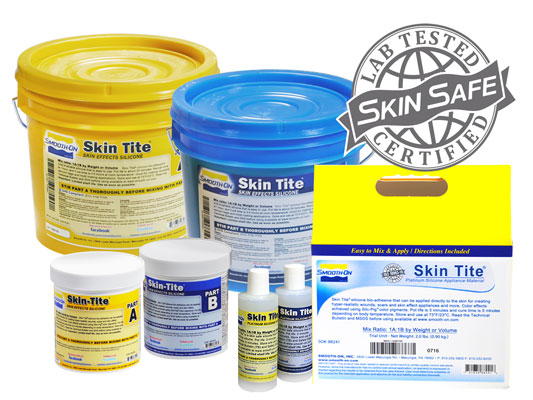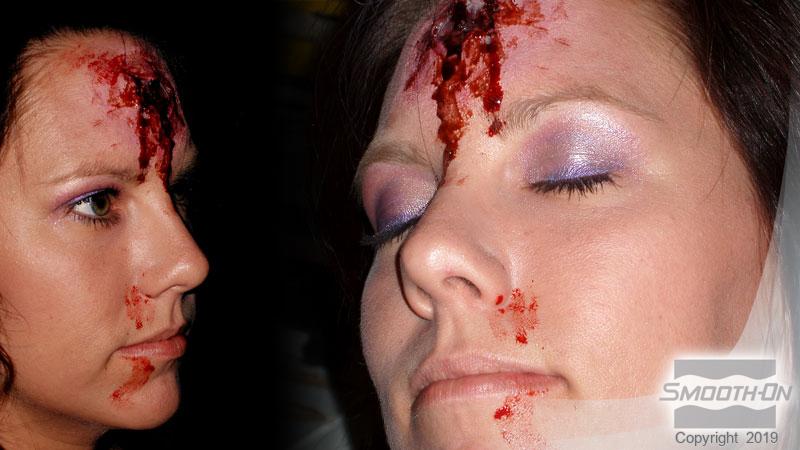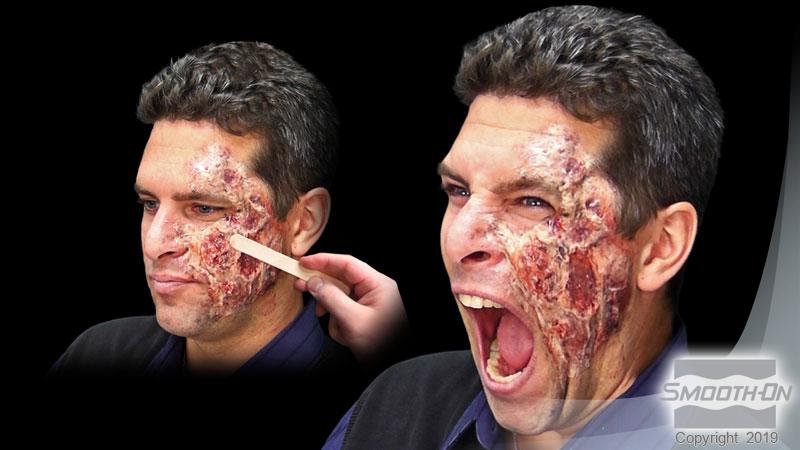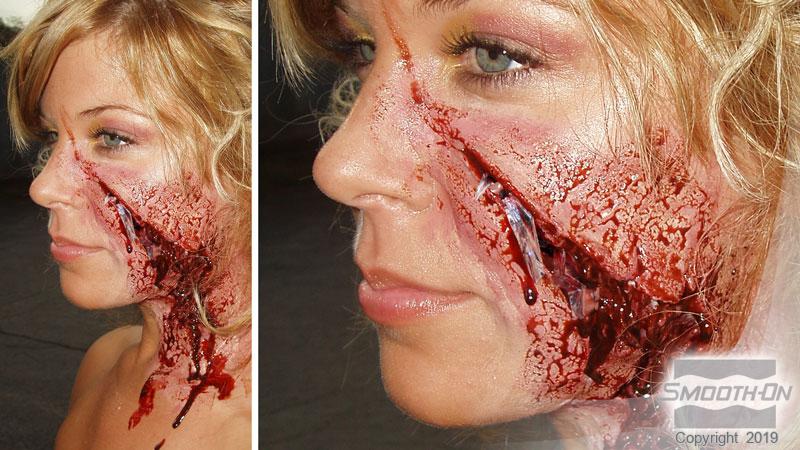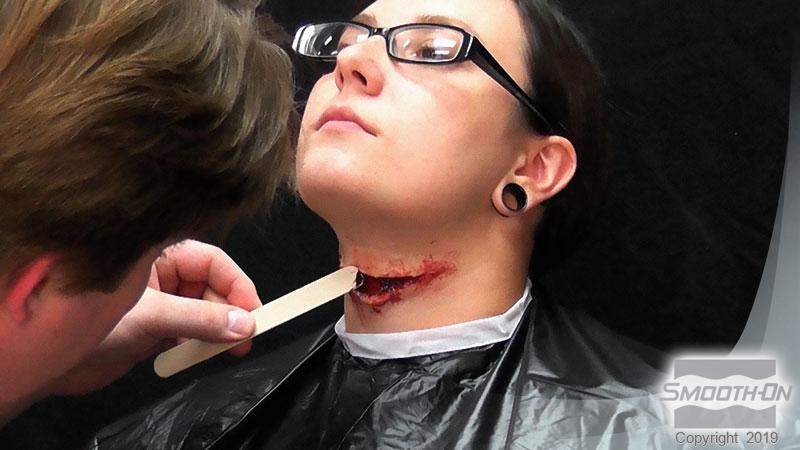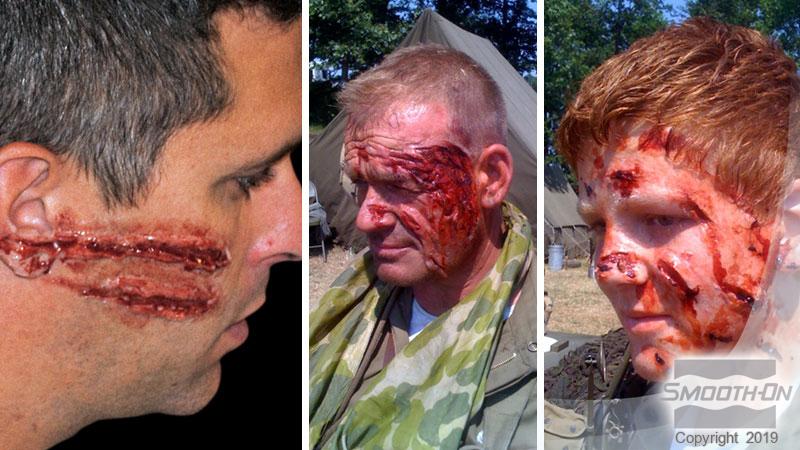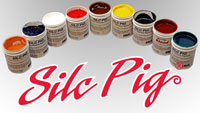Skin Tite™
Skin Tite™ is a skin safe silicone used to create fast wounds, scars and to adhere silicone appliances directly to the skin. It can be sculpted “on the fly”, offers maximum control and stays precisely where you put it. Skin Tite™ will adhere to the skin and perfectly conforms to all contours. Cured rubber is strong and will flex with body movement. Wounds and appliances will not come off until you remove them. Material is skin safe and certified by an independent laboratory.
An infinite variety of color effects are achieved using Silc Pig™ silicone pigments. Blended Silc Pig™ color pigments added to Skin Tite™ will create hyper-realistic cuts, scars, slash wounds, bruises, necrotic (dead skin) effects, bullet holes and more. THI-VEX™ thickener will thicken Skin Tite™ for even greater vertical hang control and is ideal for creating skin pockets, hanging skin, deep cuts & wounds, holes and more.
Bio-Adhesive: Skin Tite™ can also be used to adhere skin effects silicone appliances or silicone masks to the skin even when affixed to hard to hold areas such as elbows, fingers and joints. It is ideal for repetitive motion applications. Skin Tite™ will release from closely cropped hair-covered skin surfaces (short arm hair, beards, moustaches and eyebrows).
Instructions
Store and use all products at room temperature (72° F / 22°C). This product has a limited shelf life and should be used as soon as possible.
We recommend that you do a small scale test on the back of your hand to ensure that you have no allergic reaction to silicone. If you notice any type of skin reaction, do not use product.
Important: Warmer temperatures will reduce pot life and accelerate the cure time of Skin Tite™.
Skin Tite™ is a platinum-cure silicone. Platinum-cure silicone rubber may be inhibited by certain contaminants such as latex, skin oils, aloe vera, sulfur based clays, urethane rubber and tin-cured silicone rubber resulting in tackiness at the mold interface or a total lack of cure throughout the piece. If compatibility between the rubber and a surface is a concern, a small-scale test is recommended.Inhibition has occurred if the rubber remains uncured after the recommended cure time has passed.
Because no two applications are quite the same, a small test application to determine suitability for your project is recommended if performance of this material is in question.
Adding Color - Silc Pig™ silicone pigments can added and mixed thoroughly into Skin Tite™ for matching a skin color, etc.
Mixing - Skin Tite™ can be hand mixed. Aggressively hand mix for 30 seconds, making sure that you scrape the sides and bottom of your mixing container several times.
1. Using As A Bio-Adhesive - Skin Tite™ can be used to temporarily adhere a previously made platinum silicone prosthetic appliance to human skin.
Here’s How To Do It: Clean the skin to remove any oils which may affect the curing of the Skin Tite™ adhesive. Mix the Skin Tite™ thoroughly (1A:1B). After mixing, brush a small amount of Skin Tite™ onto the appliance or surface of the skin. Hold the appliance to the skin until the Skin Tite™ is cured. This should occur in approximately 5 minutes or less, dependant on body temperature. A higher temperature will cause the Skin Tite™ to cure faster. Once the Skin Tite™ is cured, it will remain tacky. Use a small amount of Skin Tite™ to carefully blend the edges of the appliance if needed. After Skin Tite™ is fully cured, theatrical makeup can be used to further blend and color the piece. To remove the appliance from the skin, slowly peel the piece away from the skin. Using baby oil or make-up remover can assist in removal.
2. Using To Make Appliances Directly On The Skin - Skin Tite™ can be combined with Silc-Pig™ silicone pigments and a small amount of THI-VEX™ thixotropic additive to create on skin silicone appliances.
Here’s How To Do It: Mix the Skin Tite™ 1A:1B by weight or volume as normal, add a small amount of pigment and mix again. After the desired color is achieved, add a small amount of THI-VEX™ and continue mixing until the desired thickness is achieved. The Skin Tite™ can now be applied directly to the skin to create scars, cuts, and other appliances. Use a small brush dipped in alcohol to feather the edges of the appliance. After the appliance is fully cured, theatrical makeup can be used to further blend and color the piece. To remove the appliance from the skin, slowly peel the piece away from the skin. Using baby oil or make-up remover can assist in removal.
Hair Covered Skin Surfaces - Skin Tite™ will release from closely cropped hair-covered skin surfaces (short arm hair, beards, moustaches and eyebrows). If hair is too long, it will become encapsulated in rubber and careful cutting of the hair may be necessary to remove.
3. Using Skin Tite™ To Cast Into A Mold To Make An Appliance - Skin Tite™ can be combined with Silc-Pig™ silicone pigments and poured into a mold which will create a re-useable silicone appliance.
Here’s How To Do It: You can cast Skin Tite™ into either a platinum silicone mold or a rigid plaster mold. Apply a soap solution (1 part dish soap to 2 parts isopropyl alcohol works well) as a mold release and let dry at least 30 minutes. Mix Skin Tite™ 1A:1B by weight or volume and cast into the mold. After the casting is fully cured, the mold release should be washed off with warm water and allowed to dry. Skin Tite™ can be used to temporarily adhere the piece to the skin. Theatrical makeup can be used to further blend and color the piece. After use, remove the piece slowly. Using baby oil or makeup remover can assist in removal.
Related Categories: Silicone Rubber - Platinum Cure, Skin Safe FX Materials
Related Series: Skin Tite™ – Silicone Appliance Builder and Adhesive for Skin F/X, Platinum Silicone Accessories – Take Your Silicone Rubber Further, Prosthetic Adhesives – Certified Skin Safe
How-To Articles
![]()
How To Create a Realistic Silicone Wound using Smooth-Cast™ 300 and Dragon Skin™ FX Pro
Learn how to make a plate mold for a wound, and how to cast and apply a Dragon Skin™ FX-Pro™ prosthetic.
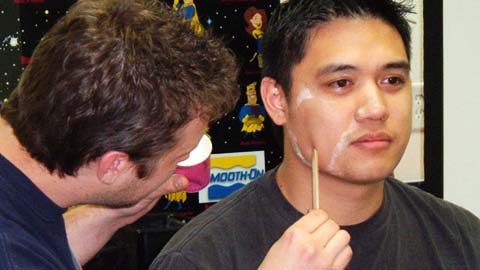
Applying an Ecoflex™ 00‑30 Silicone Prosthetic
Emmy® award winning makeup artist Stevie Bettles demonstrates
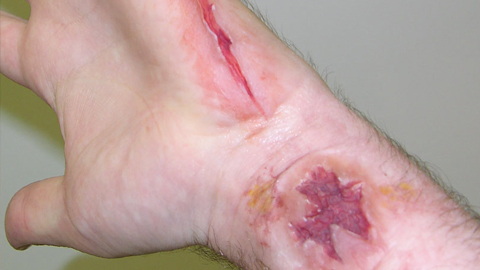
How To Make Fake Wounds and Scars Directly On The Skin
Wounds, Scars, and other gore makeup effects can easily be simulated using Skin Tite®
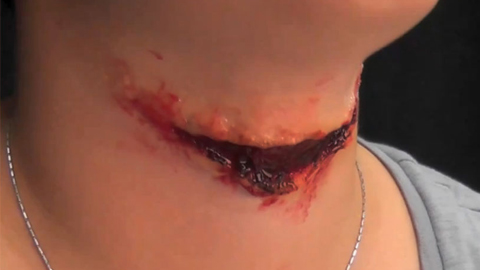
How To Create a Slashed Throat Halloween Makeup
Learn how to do a slashed throat makeup just in time for Halloween using professional-grade skin-safe silicone.
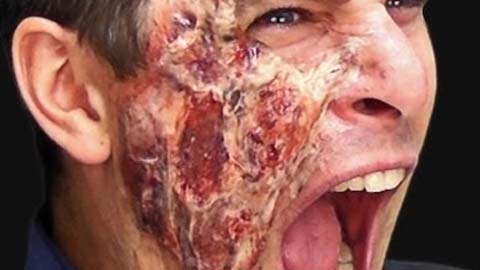
How To Create a Special Effects Makeup Burn Scar
Skin Tite® is a versatile two-component silicone rubber product that can be used as an on-skin sculpting medium.
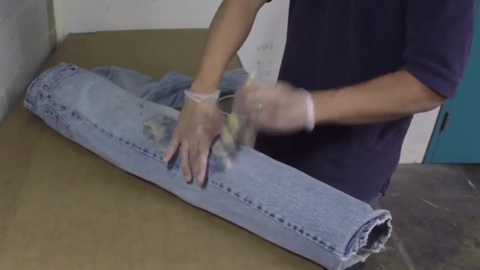
How To Make a Wearable Fake Leg Wound Effect
Smooth-On fan Jon N. shows how he uses our silicone to make a wearable fake leg wound effect.
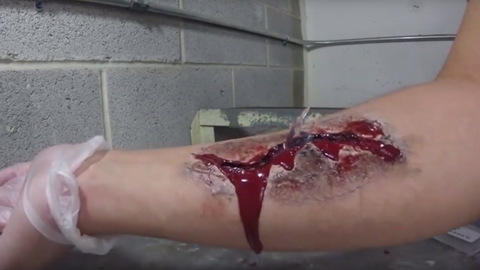
Fake Wound How-To Demonstration
Jon N. demonstrates how to make a silicone wound directly on the skin using Smooth-On's Skin Tite® Ultimate Wound Kit.
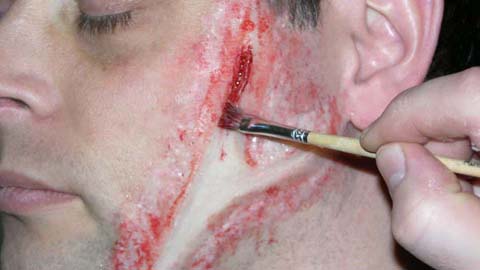
How To Make a Silicone Wound Using a Plate Mold
This step-by-step guide will illustrate how to make a flat resin plate mold that you can cast platinum silicone into.
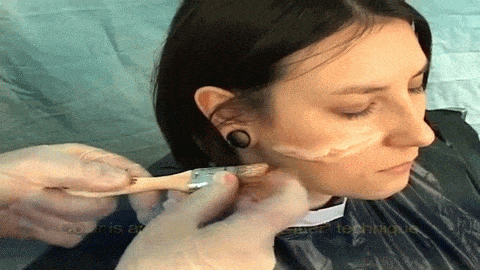
How To Make a Quick Silicone Wound Prosthetic
Making and applying professional quality wound prosthetics.
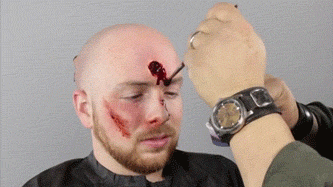
How To Make a Bullet Hole Makeup Tutorial
How To Create a Gunshot Wound Using Ecoflex and Skin Tite Silicone and Ultimate Blood
